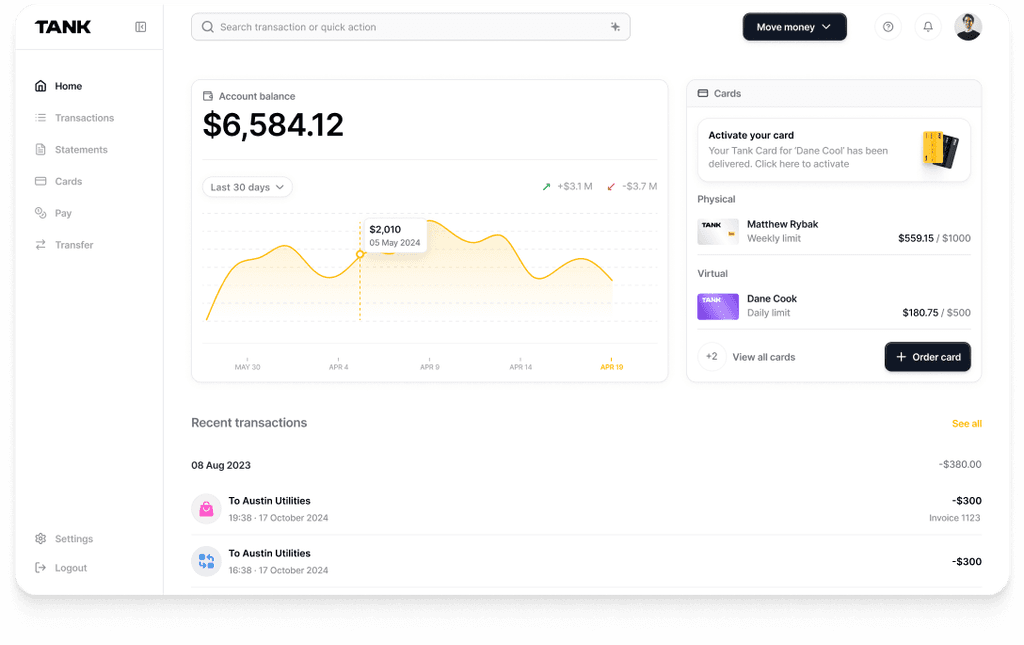Reducing Latency in Generative AI Applications
Summary
Reducing latency is vital for real-time generative AI tools like chatbots and design assistants. Factors such as model complexity, network lag, and cold starts cause delays. Techniques like model optimization, hardware acceleration, and system-level changes help cut response times while balancing speed with cost and quality.
Key insights:
Model Inference Bottlenecks: Large models generate tokens sequentially, making inference a major latency driver.
Infrastructure Matters: Network lag, cold starts, and load imbalance significantly affect end-to-end latency.
Model Optimization Works: Techniques like quantization, pruning, and distillation improve speed with minimal quality loss.
Edge and Specialized Hardware Help: GPUs, TPUs, and local AI chips reduce reliance on slow cloud round-trips.
Streaming and Hybrid Approaches Reduce Waits: Delivering partial outputs and combining fast/slow models improves responsiveness.
Trade-Offs Are Inevitable: Speed often comes at the cost of accuracy, cost efficiency, or model richness.
Introduction
Latency, the delay between a user's input and the AI system's response, is a critical factor in the performance of generative AI applications. In this context, it refers specifically to the time taken from when a prompt is submitted to when the model delivers a usable output. While generative models have become increasingly powerful, their usefulness in real-world scenarios often hinges on how quickly they can generate meaningful responses.
This becomes especially important in real-time applications such as conversational AI (e.g., ChatGPT), AI-powered design tools (e.g., Midjourney), and coding assistants (e.g., GitHub Copilot). Even slight delays can interrupt workflow, reduce trust in the system, or make the interaction feel unnatural. Users today expect near-instant results, and high latency can be a deal-breaker.
As generative AI is integrated deeper into user-facing products, reducing latency is not just a technical improvement; it is a necessity for delivering seamless, responsive, and productive experiences.
Key Sources of Latency
1. Model Inference Time
Model inference time refers to the duration the system takes to compute a response after receiving the user’s input. This is often the most time-consuming stage in a generative AI workflow. Large Language Models (LLMs) generate output one token at a time, and each token must be calculated based on the ones that came before it. The larger and more complex the model, the more processing is required for each token. As a result, latency increases with both the size of the model and the length of the output. These delays are especially noticeable when using high-parameter models in applications that require real-time or near-instant responses.
2. Model Size and Complexity
The size and architectural complexity of a model directly impact how quickly it can respond. Models with billions of parameters can deliver highly accurate and sophisticated outputs, but they come with significant computational demands. Each additional layer in a neural network introduces more operations, which slows down processing. Moreover, larger models often require more memory and specialized hardware like GPUs or TPUs to run efficiently. In environments where these resources are shared or constrained, the model’s size becomes a bottleneck that extends latency and reduces scalability.
3. Network Latency
Network latency accounts for the time it takes for data to travel between the client device and the server hosting the model. In cloud-based deployments, every request must pass through the internet before being processed, and then the response must return to the user. Factors such as physical distance, network congestion, and the quality of internet service all affect this round-trip time. Even when the model is optimized, poor network conditions can result in a sluggish and frustrating user experience. Network latency is especially critical in mobile applications or regions with unstable connectivity.
4. Cold Start Delays
Cold start delays occur when server-less or on-demand infrastructure is used to host the generative AI model. In these environments, computing resources are not always running continuously. When a new request arrives and no active instance is available, the platform must initialize a new environment before the model can begin processing. This initialization process can introduce several seconds of delay, which users perceive as lag or downtime. While cold starts help reduce resource costs, they can negatively impact performance during the first interaction or after periods of inactivity.
5. Prompt Preprocessing and Tokenization Overhead
Before a prompt can be processed by an LLM, it must be preprocessed and tokenized. Tokenization involves breaking down the input text into smaller units called tokens, which are the basic units the model understands. Although this is a necessary step, it adds to the total response time, particularly when the input is long or complex. Additionally, the structure and formatting of the prompt can influence how efficiently it is tokenized. Inefficient preprocessing pipelines can cause bottlenecks even before the model begins inference.
6. Post-processing and Rendering Delay
Once the model generates its output tokens, the system must post-process the results to deliver a complete and usable response. This includes decoding tokens back into human-readable text, formatting content, and in some cases, integrating the output into a graphical or interactive interface. For image, audio, or video generation tasks, this stage may involve additional steps like rendering or applying visual effects. Although often overlooked, these final touches contribute to overall latency and can determine how fast the user sees the final output.
Strategies to Reduce Latency
1. Model Optimization
Reducing the computational burden of a generative model is one of the most direct ways to lower latency. Large Language Models are typically resource-intensive, but several techniques can help streamline their performance. Quantization is a method where model precision is reduced, for instance, converting weights from float32 to int8, which speeds up inference without a major drop in quality. Pruning removes less important parameters and connections from the model, shrinking its size and allowing faster computation.
Another widely used approach is knowledge distillation, where a smaller, faster model is trained to replicate the behavior of a much larger one. This smaller model, once tuned, can deliver results much quicker while retaining acceptable accuracy. In certain applications, caching parts of the computation, such as token embeddings or intermediate outputs in a multi-turn conversation, can eliminate the need to recompute results, further improving response times.
2. Hardware Acceleration
The choice of hardware significantly influences the speed at which generative models operate. CPUs, while general-purpose, often struggle with the demands of large models. GPUs and TPUs are designed for high-throughput parallel processing, making them far more efficient for tasks like matrix multiplication, which are central to deep learning inference.
In edge computing scenarios, dedicated AI hardware such as NVIDIA Jetson or Apple’s Neural Engine can deliver high-speed inference locally, reducing the need for cloud communication and thus lowering latency. Optimizing models for specific inference engines like ONNX, TensorRT, or CoreML can also result in substantial performance improvements. These engines are purpose-built to run models with maximum efficiency on supported hardware, ensuring minimal wasted computation.
3. Infrastructure Improvements
Beyond the model itself, the architecture and deployment of the system have a major impact on latency. Hosting models on edge infrastructure brings computation closer to the end user, reducing physical and network distance and enabling faster round-trip times. In cloud environments, implementing load balancing ensures that incoming requests are evenly distributed across servers, preventing performance bottlenecks. Autoscaling allows systems to adapt to spikes in demand by provisioning additional resources as needed.
Another effective strategy is maintaining server warm pools. In server-less environments, cold starts can introduce several seconds of delay when a model is first accessed. By keeping a pool of ready-to-serve instances alive, these delays can be avoided entirely, ensuring faster first-response times.
4. Architectural and System-Level Changes
Optimizing system design is critical for achieving low latency at scale. One effective method is asynchronous processing or streaming output, where partial results are delivered to the user as soon as they become available rather than waiting for the entire response to complete. This improves perceived responsiveness and can drastically enhance user experience. Hybrid architectures offer another path forward. In these systems, smaller, faster models can be used for preliminary responses or classifications, while more complex models are called only when deeper analysis is required. Prompt engineering also has a direct impact on performance. By minimizing prompt length and reducing token count, the model has less text to process and can respond more quickly. Structuring prompts in a way that encourages efficient generation and discourages overly verbose answers helps reduce both input and output token loads, accelerating the overall interaction.
Trade-Offs and Limitations
1. Accuracy vs Speed
Reducing latency often involves compromises in model complexity and size, which can directly impact the accuracy of outputs. Smaller or highly optimized models may respond faster but are typically less capable of handling nuanced queries or generating sophisticated responses. For example, a simplified model might be sufficient for answering basic questions or handling structured inputs, but it may struggle with more open-ended tasks that require deeper reasoning, contextual understanding, or creativity. The trade-off between speed and intelligence becomes particularly noticeable in applications that depend on high factual precision, such as legal document analysis, financial advice, or technical support. Choosing a faster model may sacrifice depth and accuracy, which can undermine trust and reliability in these contexts.
2. Cost vs Latency
Reducing latency often requires more powerful hardware, dedicated infrastructure, or always-on server instances, all of which come with increased costs. Achieving low-latency performance in production environments means investing in high-performance GPUs, provisioning resources for peak usage, and possibly deploying edge computing capabilities. While these approaches improve responsiveness, they can significantly raise operational expenses. On the other hand, minimizing cost through shared compute, server-less architecture, or resource throttling can result in cold starts, processing queues, and higher latency. Businesses must carefully evaluate their performance needs and financial constraints to determine the right balance between responsiveness and sustainability.
3. Model Quality vs Optimization
To make models faster, developers often rely on aggressive optimization techniques such as quantization, pruning, or distillation. While these methods effectively reduce model size and computation time, they can degrade the quality of the output. Creativity, coherence, and reasoning are often the first to suffer. A distilled model may be quick to respond but could produce generic or repetitive outputs, lacking the richness found in larger models. These limitations become more evident in applications involving generative design, storytelling, or advisory systems that require a nuanced understanding of context. Over-optimization can also reduce a model's ability to adapt to diverse inputs, limiting its usefulness across different domains.
Conclusion
As generative AI continues to reshape how people interact with technology, reducing latency has become a central priority. Fast, responsive systems are essential for delivering seamless and engaging user experiences, especially as these models are integrated into real-time applications like virtual assistants, design tools, and coding copilots. While optimizing for speed is crucial, it must be carefully balanced with accuracy, cost, and overall model quality. Striking this balance ensures that users not only receive quick responses but also trust the relevance and depth of the output. Looking ahead, as generative AI becomes more deeply embedded in everyday products and services, the demand for low-latency performance will only grow. Organizations that succeed in addressing this challenge will be better positioned to offer intelligent, reliable, and delightful AI-driven experiences at scale.
Authors
Build low-latency AI with Walturn.
Walturn engineers AI systems optimized for speed, using advanced model tuning, edge deployment, and system-level innovations.
References
Jain, Sulbha. “Why Do LLMs Have Latency ? - Sulbha Jain - Medium.” Medium, 18 Dec. 2024, medium.com/@sulbha.jindal/why-do-llms-have-latency-296867583fd2.
Tuohy, Steve. “The Challenge of Real-Time AI: How to Drive down Latency and Cost.” Aerospike, 20 Aug. 2024, aerospike.com/blog/real-time-ai-latency-cost-reduction/.
















































